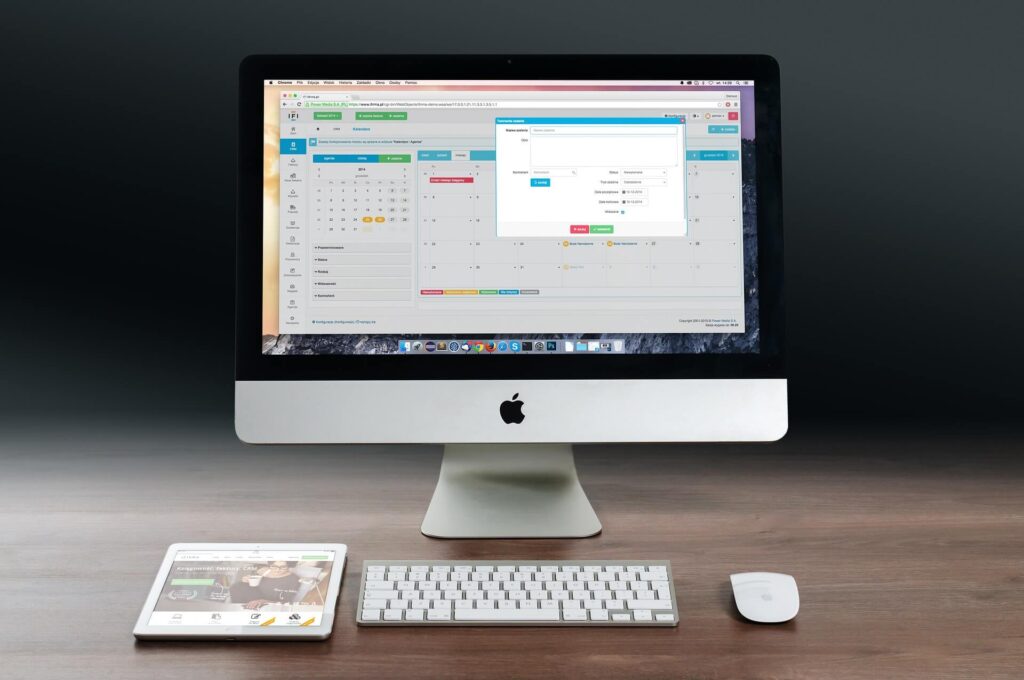
600+ Google reviews with a 4.8+/5 rating
Apple iMac Repair in Singapore
Getting an Apple iMac repair service in Singapore is straightforward and hassle-free if you’re at the right place. Several things could have gone wrong with your iMac, and it’s only right to have a well-trained iMac repair expert to look at it. It’s important to consult only with experts when it comes to iMacs or any other Apple devices as these machines are high-priced, big-ticket commodities. Given their value, they require special care.
Taking your iMac to a non-specialized repair technician may not work to your advantage. Listed below are just some of the most common issues that iMac users encounter with their computers. If you encounter any of these, be sure to find a qualified technician near you to have your computer assessed.
13 Common Issues iMac Users Face
Here are the most common issues that iMac users encounter and what you can do about them. Know that each issue requires a different set of diagnostic and parts replacement processes. Be sure that you consult only with a certified iMac technician to get quality parts and an adequate service warranty. Doing so protects you and your investment.
1. LCD or LED Screen Display Issues
If the LCD or LED screen of your iMac computer is faulty, it can either be repaired or replaced. This will depend on the troubleshooting and diagnostics performed by the technician. LED or LCD troubles are common problems of iMacs. The general concern about this is that these screens come in different sizes, which means it may be hard to get a replacement handy.
It’s important to get the screen that perfectly fits your iMac, not just in size but also in terms of pixel density. It may be a bit challenging to find an LCD that’s compatible with older iMacs. If this is the case, allow the service center to source one for you, which could take a few days.
The LCD or LED of the iMacs may exhibit problems other than failing to turn on, such as dead pixels and display discoloration. It may still be possible to repair screens with these problems, but not without intensive knowledge and training about iMacs and monitor screens. The same is true for aesthetic problems such as cracks, scratches, and yellowing.
2. Hard Drive Issues
The hard drive is the component of your iMac that stores all your files and data. It also contains information about the operating system, applications, and anything else saved on your computer. Hard drives are durable parts, but they will fail at one point. It’s because hard drives have a lot of moving parts that could suffer wear and tear after repeated use.
When a hard drive fails, the common solution is to get it replaced. A hard drive may be repaired, but going that route is not advisable, because it is bound to fail again. The best thing to do is to retrieve all your important files from the drive and save them in a new one.
iMac users will know if their hard drives are about to fail because they will likely hear clicking sounds whenever they save or access a file. Computers with failing hard drives tend to work very slowly. If you notice these things on your iMac, it is best to create a backup of all your files before the hard drive fails when it becomes impossible to retrieve your files. Hard drives should be replaced before they break down.
3. Start-Up Issues
It should be easy to turn on an iMac because all you need to do is press a button. But if your computer fails to run properly when it should have, then you have what’s called a start-up issue. It may mean that your iMac is no longer receiving power or there’s an issue with the boot sequence.
If you’re pretty sure that your computer has power, but it just won’t continue to load as normal, then it may not be a hardware issue, but a software problem. Booting into Safe Mode and making some adjustments to the boot file and computer settings may solve the problem.
Certified Apple technicians can get into Safe Mode and check your system’s configuration. They can also do some repairs to the operating system settings in case there are directory issues causing the problem. Software-related issues are easier to fix than hardware issues, as the latter would require parts replacement. Get your iMac checked by a qualified technician to be sure
4. Operating System Issue
Operating systems encounter issues as well. It means that it may have gotten corrupted, or maybe some other applications or programs have caused it to crash. Oftentimes, reinstalling the operating system fixes the problem. While that sounds easy, a good iMac technician can do it in such a way that there are minimal changes to your computer so can still back up your important files
5. USB Ports Not Working
USB ports add a lot of functionality to your iMac. You want every single one of them to work fine. However, USB ports may get fried after long and continued use. If this is the case for your iMac, you would have those USB ports replaced.
However, if all the USB ports of the iMac are not working, there’s a possibility that it is a software issue. The USB drivers may need to be reloaded into the system or some settings may have to be changed. Send your iMac over to a certified Apple technician to get its USB ports checked.
6. Headphone Jack Issue
Like the USB ports, the headphone jacks may get busted as well. You’ll know that’s the case if you can’t hear any sound from your computer when you connect your headphones. However, this may also be either a software or hardware issue.
One way to check is to reload the sound drivers of the iMac and check if the headphones start to work after that. If it still doesn’t work, then it becomes necessary to replace the entire audio chip of your iMac. Take it to a qualified technician for assessment.
7. Logic Board Issue
Every Apple computer comes with a logic board, which is also referred to as the primary circuit board. Its function is to facilitate the interaction of each component and maintain their normal functions. If the logic board fails, expect to have communication issues between these components, which can result in a system crash.
The iMac’s central processing unit won’t be able to send signals if the logic board has issues. Think of the CPU as the brain and the logic board is the nerve center of the computer. If the nerve center isn’t working, then data from the rest of the components won’t receive the necessary information needed for them to function correctly.
8. Motherboard Issue
The motherboard or the main board is the part of the computer where all other components are connected. It offers the landscape for every part and component of the iMac. If one portion of the motherboard fails to work for whatever reason, the rest of the system gets affected.
The motherboard has the most important components embedded in it, such as the CPU, SSD, memory, and all other daughter boards. A motherboard may get burned or water damaged. If this happens, the most viable solution is to get it replaced.
9. Slow speed or RAM Issues
When your iMac’s RAM or random-access memory modules get damaged, then the computer will work unusually slowly. There are two ways to address this problem. The first way is to upgrade the memory modules. If you’re using a highly intensive application on your iMac, then it is likely that it’s consuming most of the system’s memory, leaving no room for applications running in the background. A RAM upgrade will easily solve this problem.
However, if the memory modules are deemed defective, then they need to be replaced. Let the technician run some diagnostics on the RAM to see if they’re still in the best condition. Some computers may have their RAMs maxed out, but users are still having problems with sluggishness. This is true for older iMacs. To solve this problem, an entire computer upgrade is necessary.
10. Power Supply Issues
The power supply, as its name suggests, is the component that delivers electrical current to the computer. When the power supply doesn’t work then the iMac is a dead set. It simply won’t turn on. The power supply is one of the first things that technicians check if an iMac fails to power up.
11. Fan Issues
There are fans installed inside your computer and their job is to ventilate the system. Some of the major computer parts generate so much heat, such as the CPU and the graphics board. It is necessary to have a fan installed on top of them, so they won’t overheat and damage other parts.
Therefore, the role of these fans is crucial. If they are not working, they must be replaced as soon as possible. Otherwise, your CPU and video card will get burnt, and your entire system shuts down. Have the fans of your iMac checked and cleaned regularly.
12. Built-in Camera Issues
Cameras are one of the most used accessories for computers these days. It’s because they play a crucial role in communication. If your iMac has a built-in camera and it isn’t working, then it may be caused by a hardware failure and needs to be replaced. However, a technician will first check if it’s a driver problem before replacing it.
13. Built-in Microphone Issues
Built-in microphones are used in conjunction with the built-in camera so both must work flawlessly. If you encounter any issues with it, be sure to have the audio card on your computer checked. In case it is faulty, then it needs a replacement.
WHY CHOOSE US REPAIRADVISE?
Get your iMacs repaired by qualified technicians. We repair all types of Apple devices, particularly iMacs and MacBooks. Our team of expert technicians is one of the most trusted in Singapore when it comes to iMac repair services. We offer:
- Apple Certified Service Repairs
- Expert Diagnosis and Troubleshooting
- Original Parts Replacement
- Fast Repair Service
For reliable iMac repair services in Singapore, our team is your best choice. We have the best people and tools for the job. Deal only with trusted experts.
5 iMac Repair FAQs
The cost of repairing an iMac screen depends on what LCD or LED your computer has. The bigger the screen, the more expensive the repair is. The LED replacement for a non-retina iMac 27-in and 21-inch costs around S$180 and S$320, respectively. A retina display repair starts at S$420, which can go higher depending on its resolution.
Repairing an iMac will always depend on the availability of parts. iMacs that have been around for a year will likely have some parts available than older ones. Best to have these checked by the technician so they can give you a more specific timeline.
Certain iMac screen issues can be easily repaired. A certified technician would know whether the repair is going to be viable or not. In most cases, getting a replacement is better. Best to seek the expNJBM ert opinion of a certified iMac service provider.
The cost to repair an iMac will depend on its issue. Major parts repair is expensive, such as motherboard and CPU replacement. Some repairs are not as costly, especially if they constitute external parts and accessories. Best to send in your iMac to a qualified repair technician to have it diagnosed and assessed.
The information saved on an SSD or Solid-State Drive may still be retrieved if it is not badly damaged physically. Have some iMac data recovery experts check the condition of the SSD and allow them some time to access your data.
Make an Appointment






